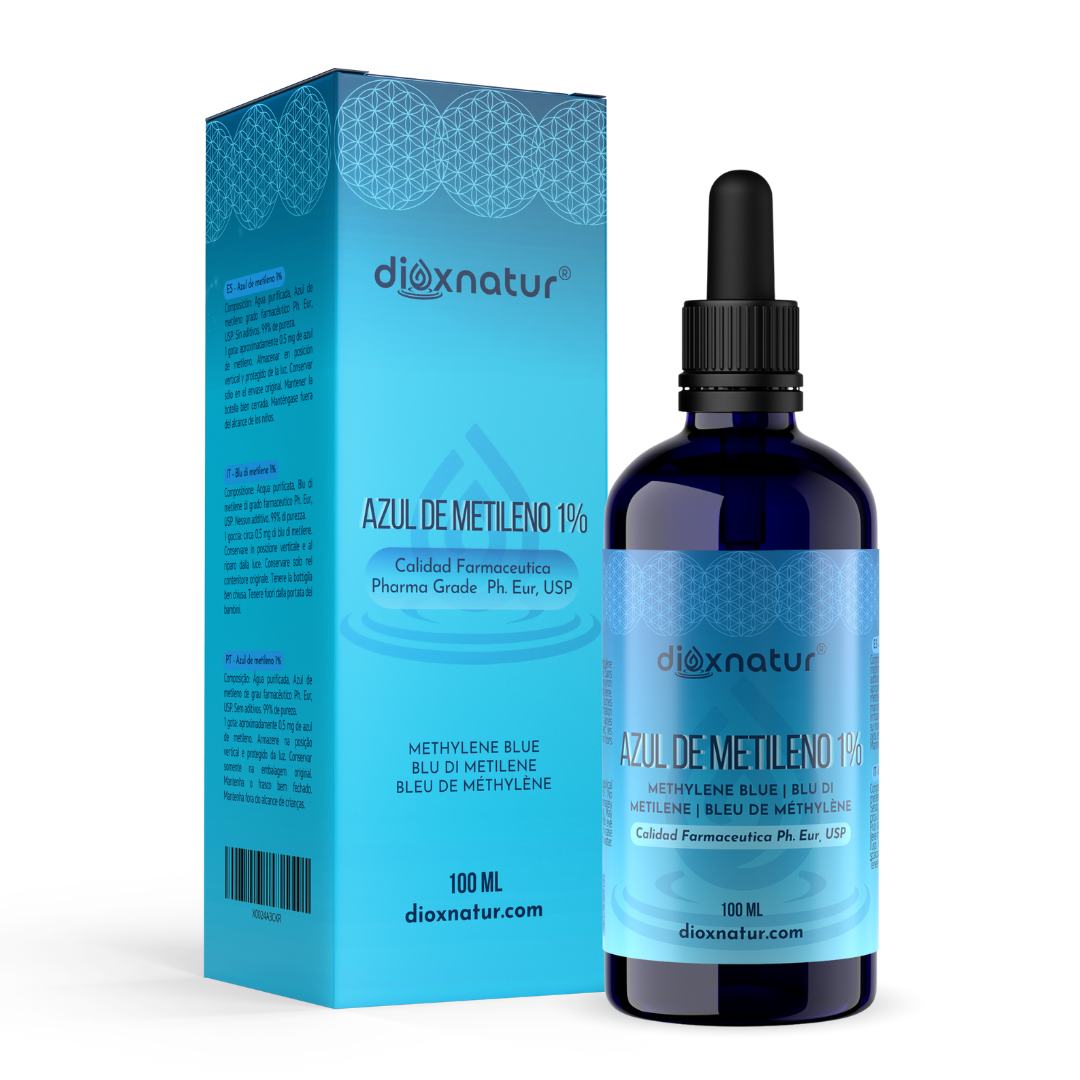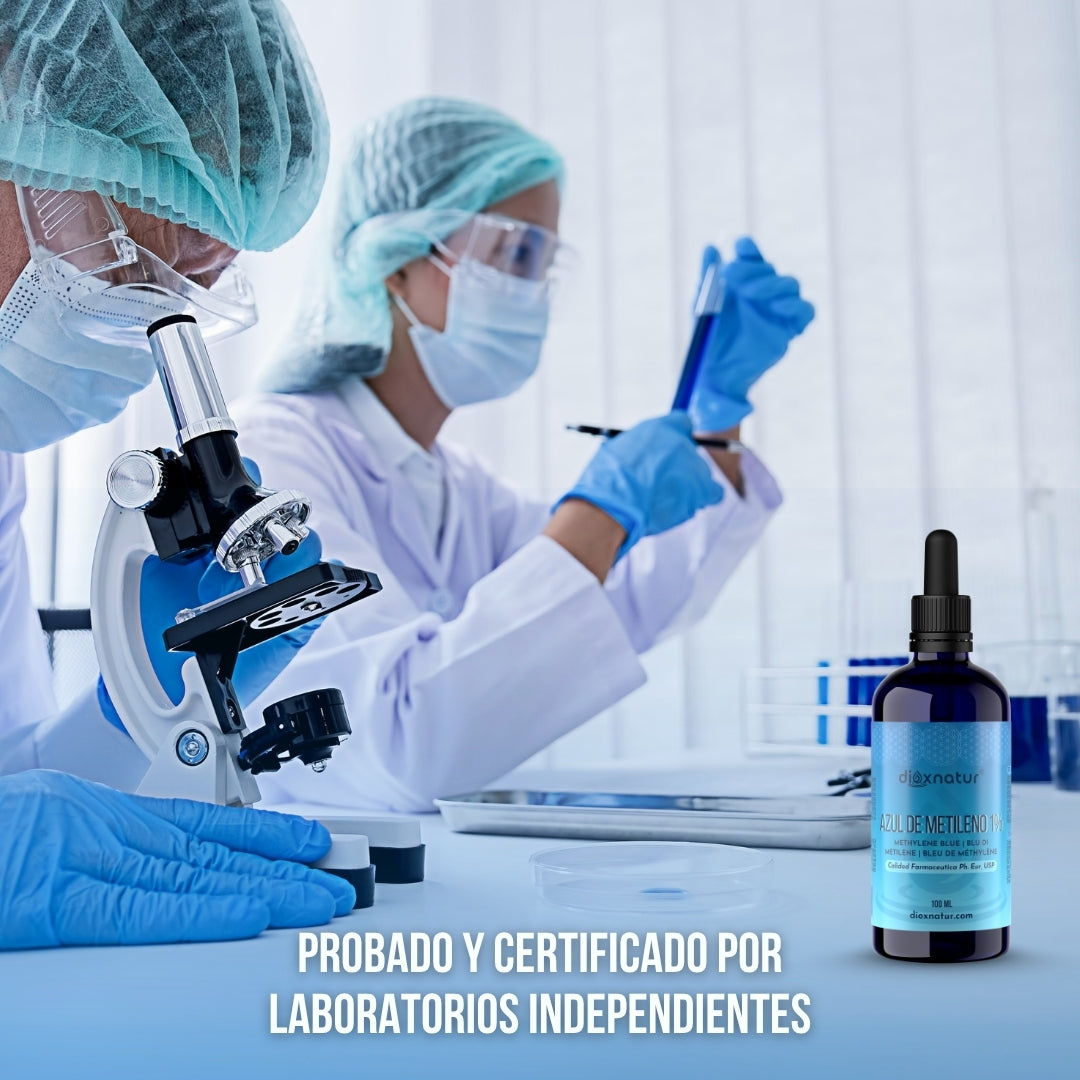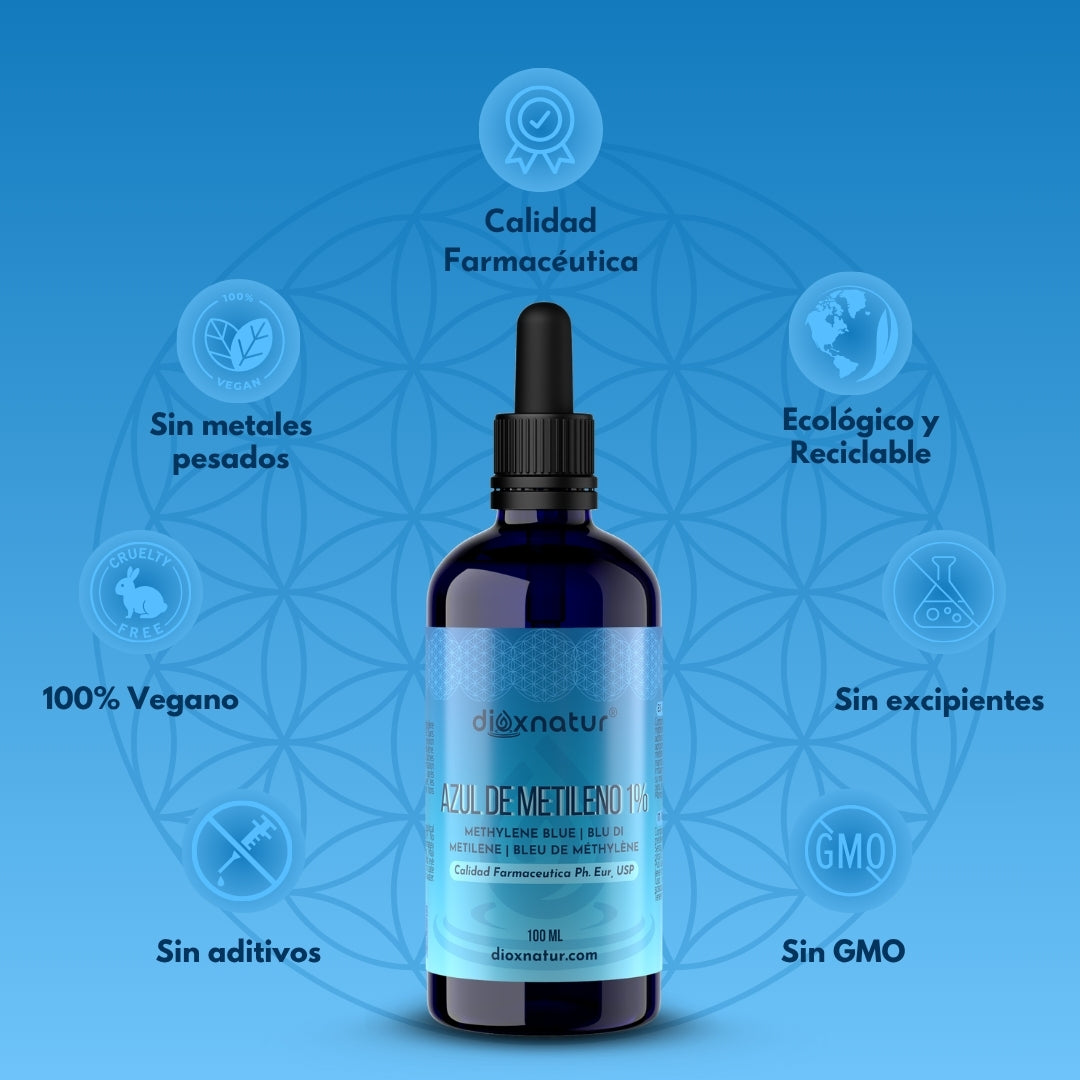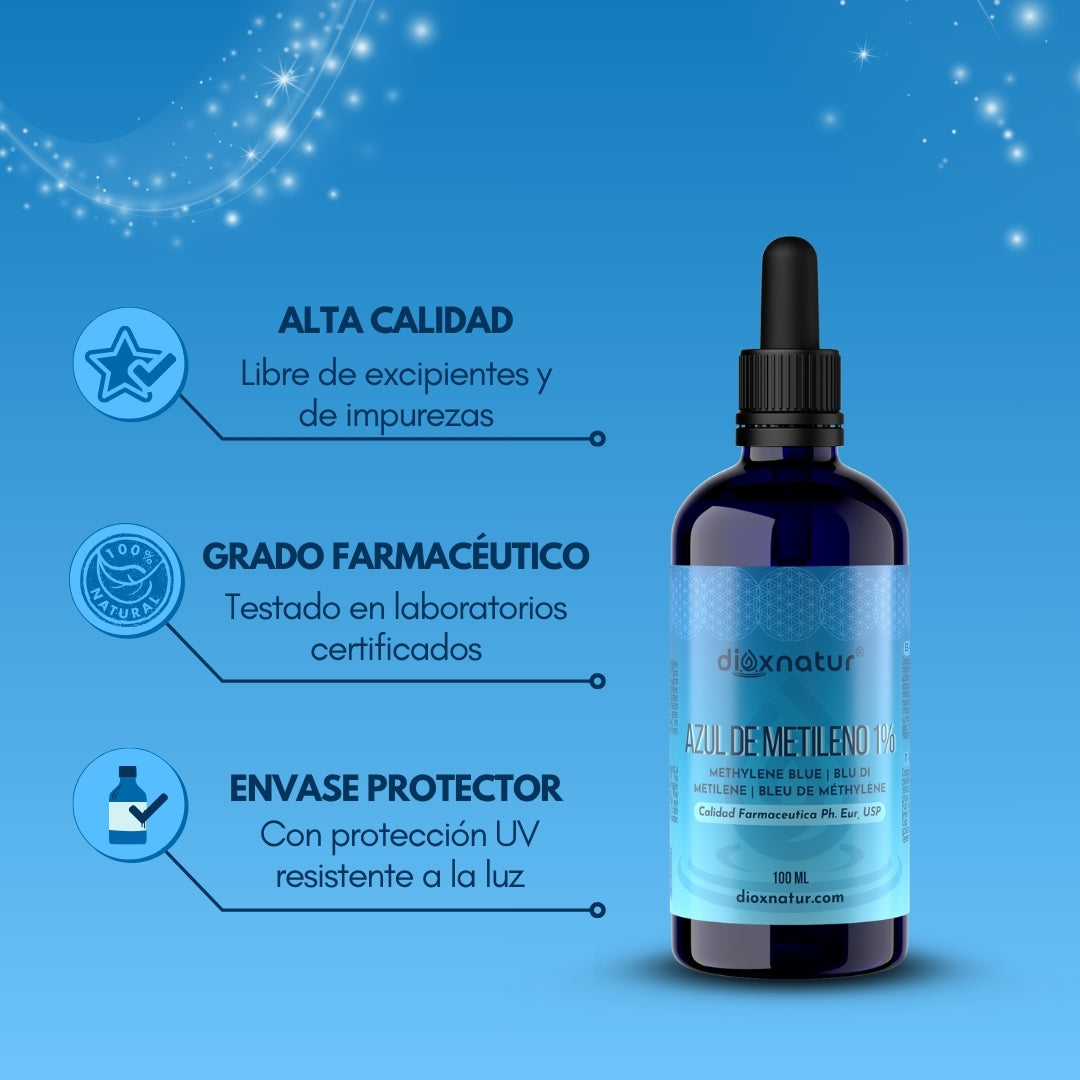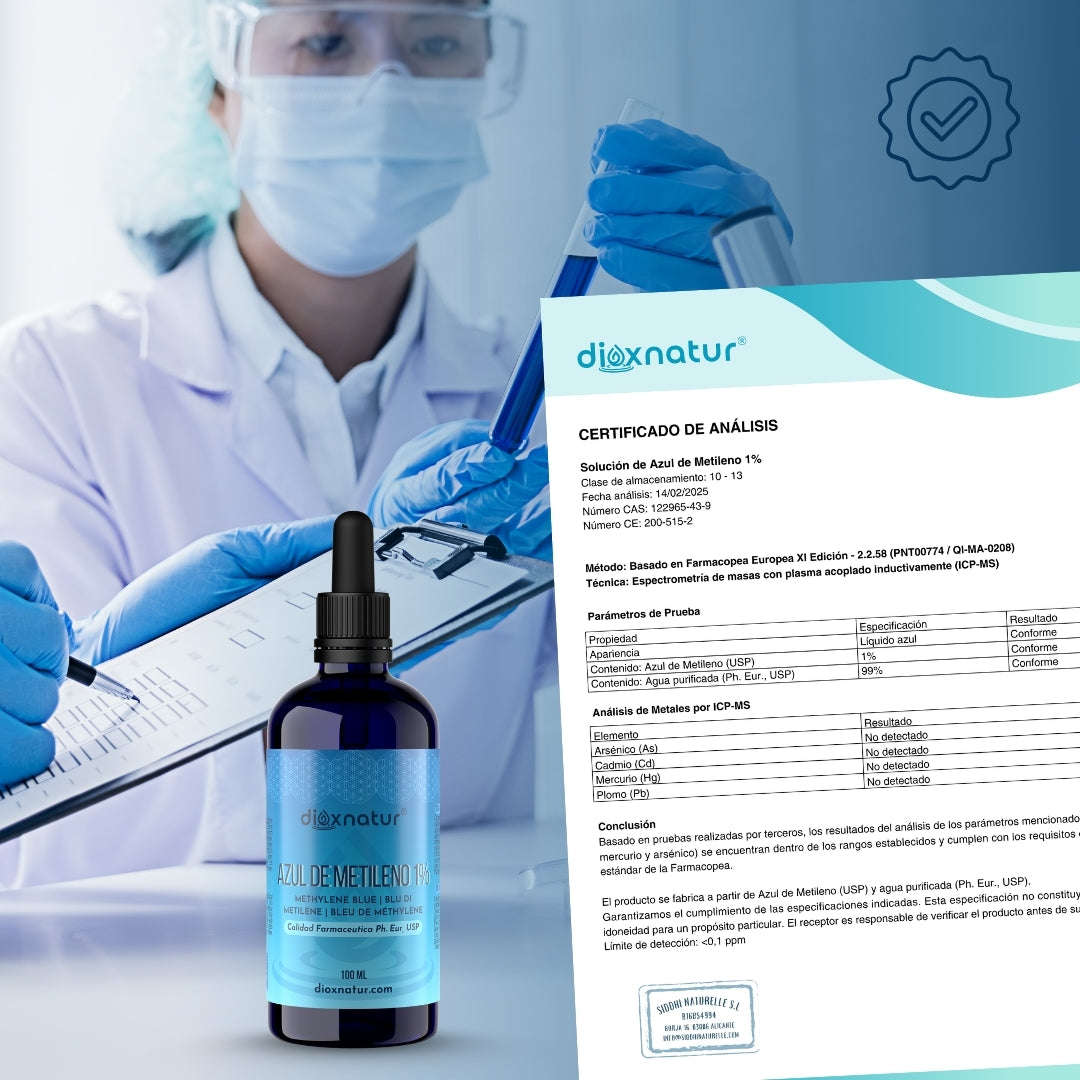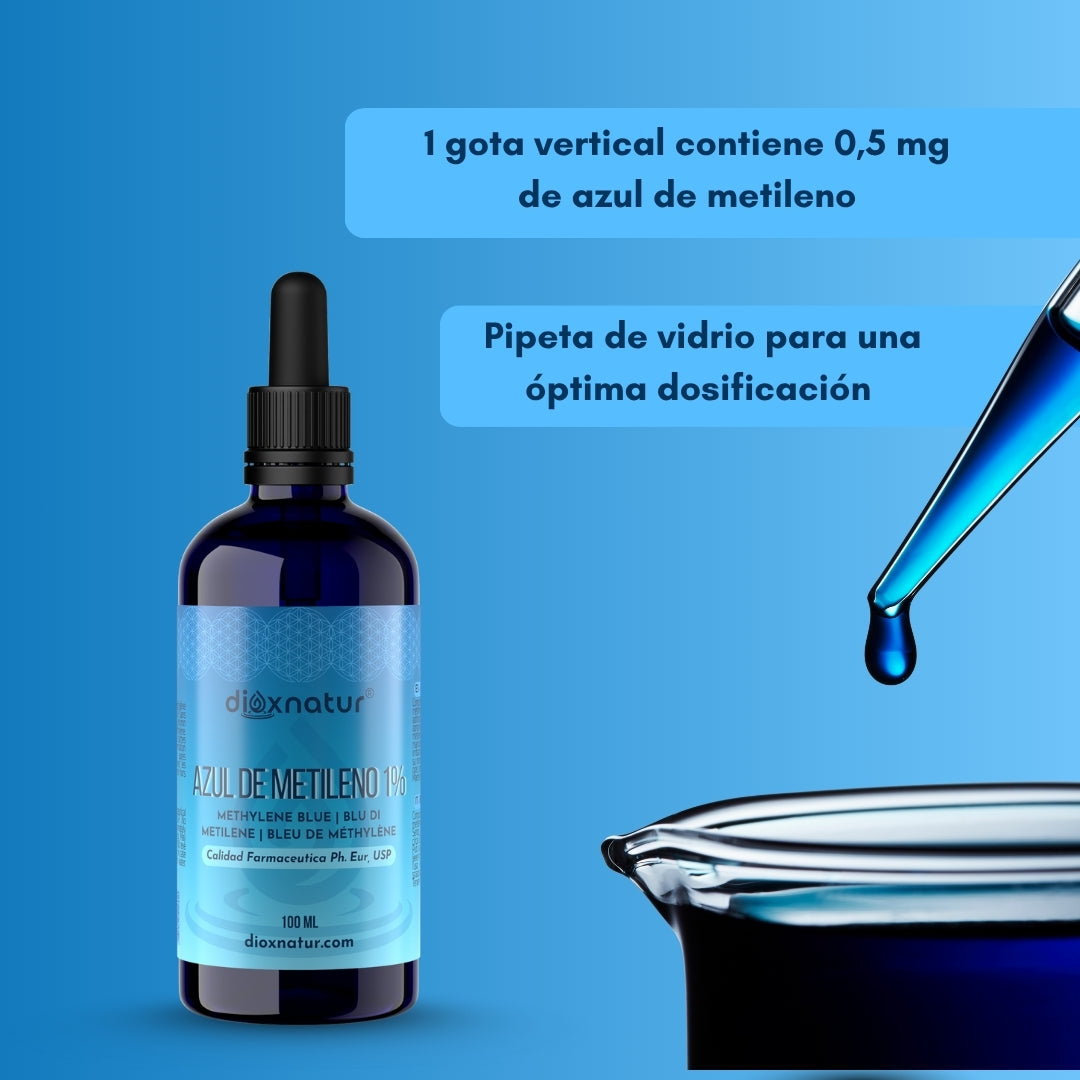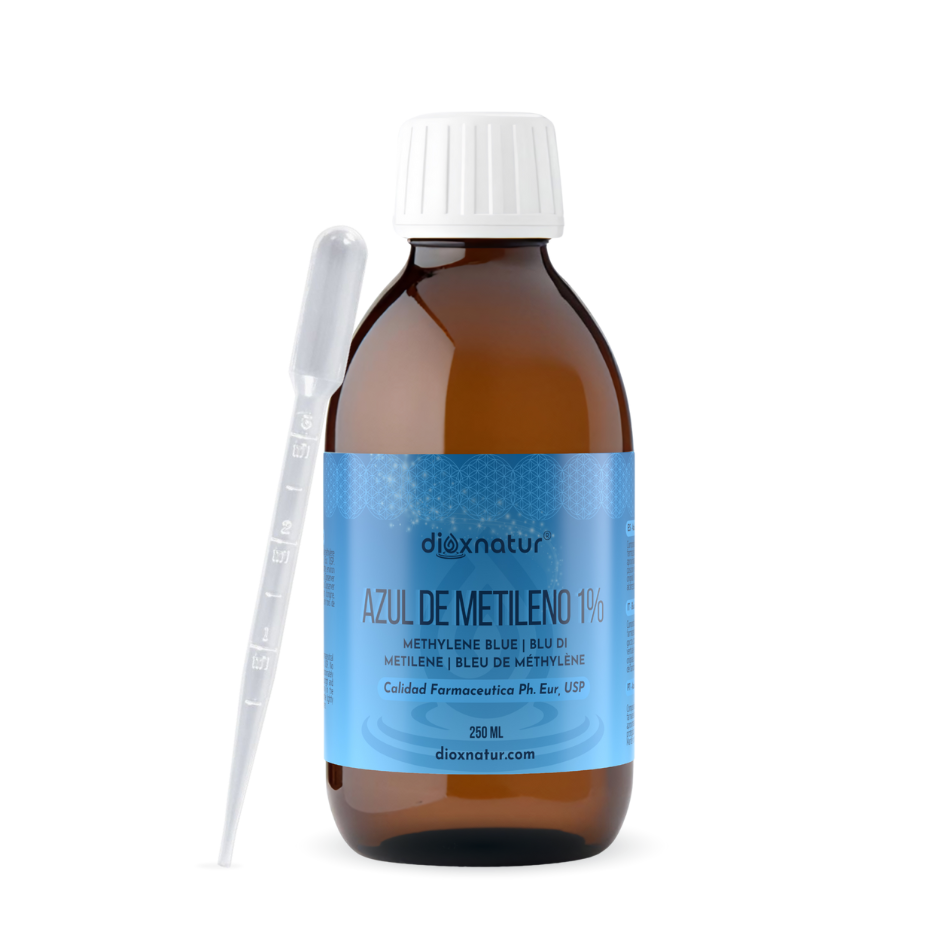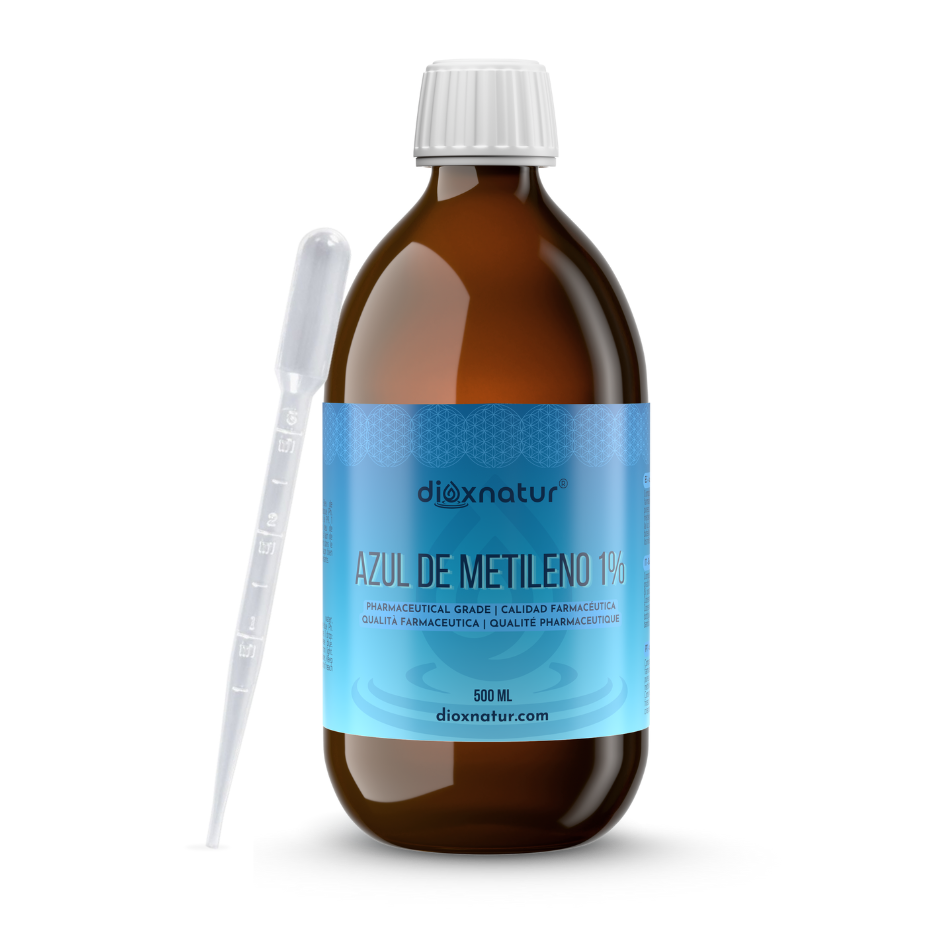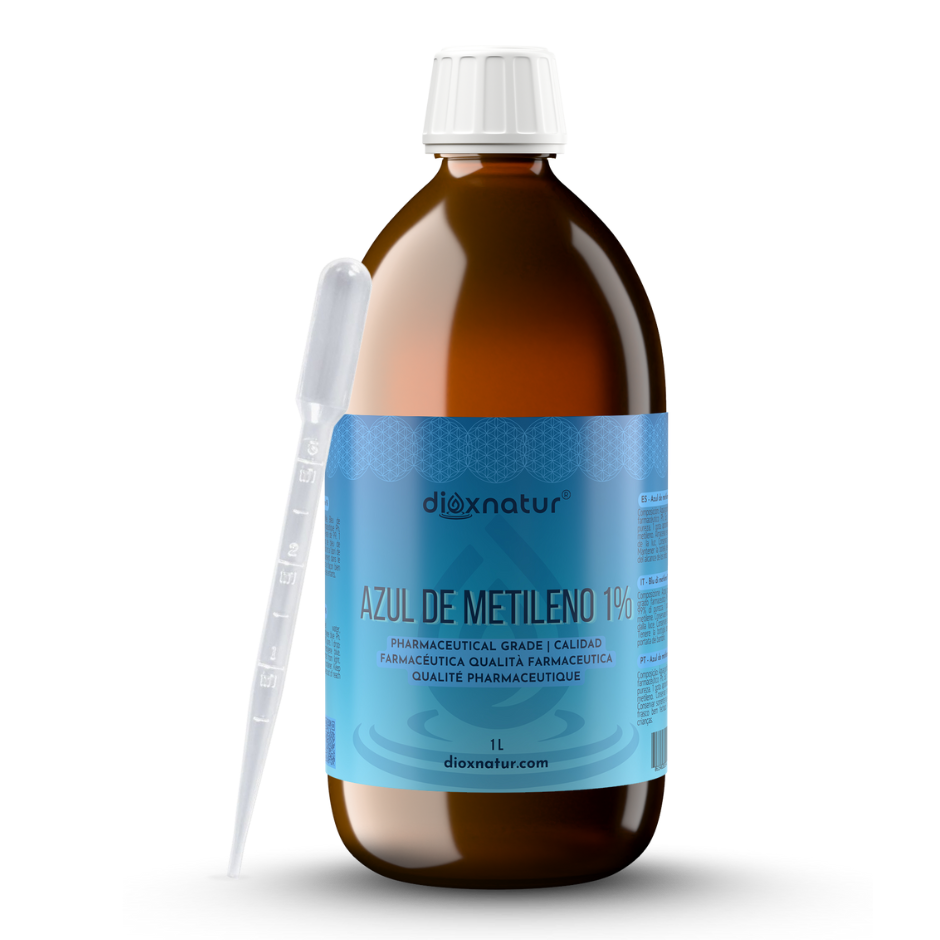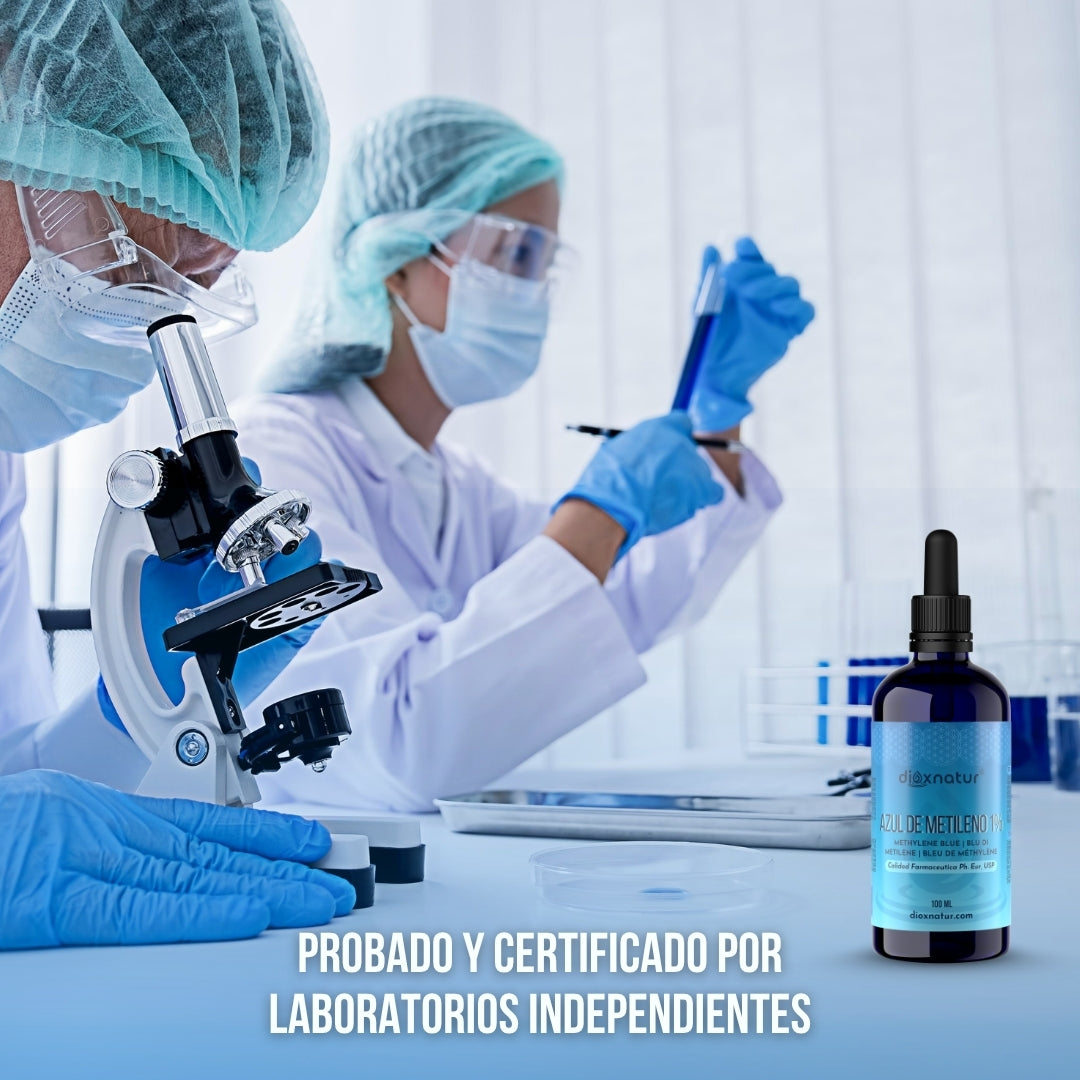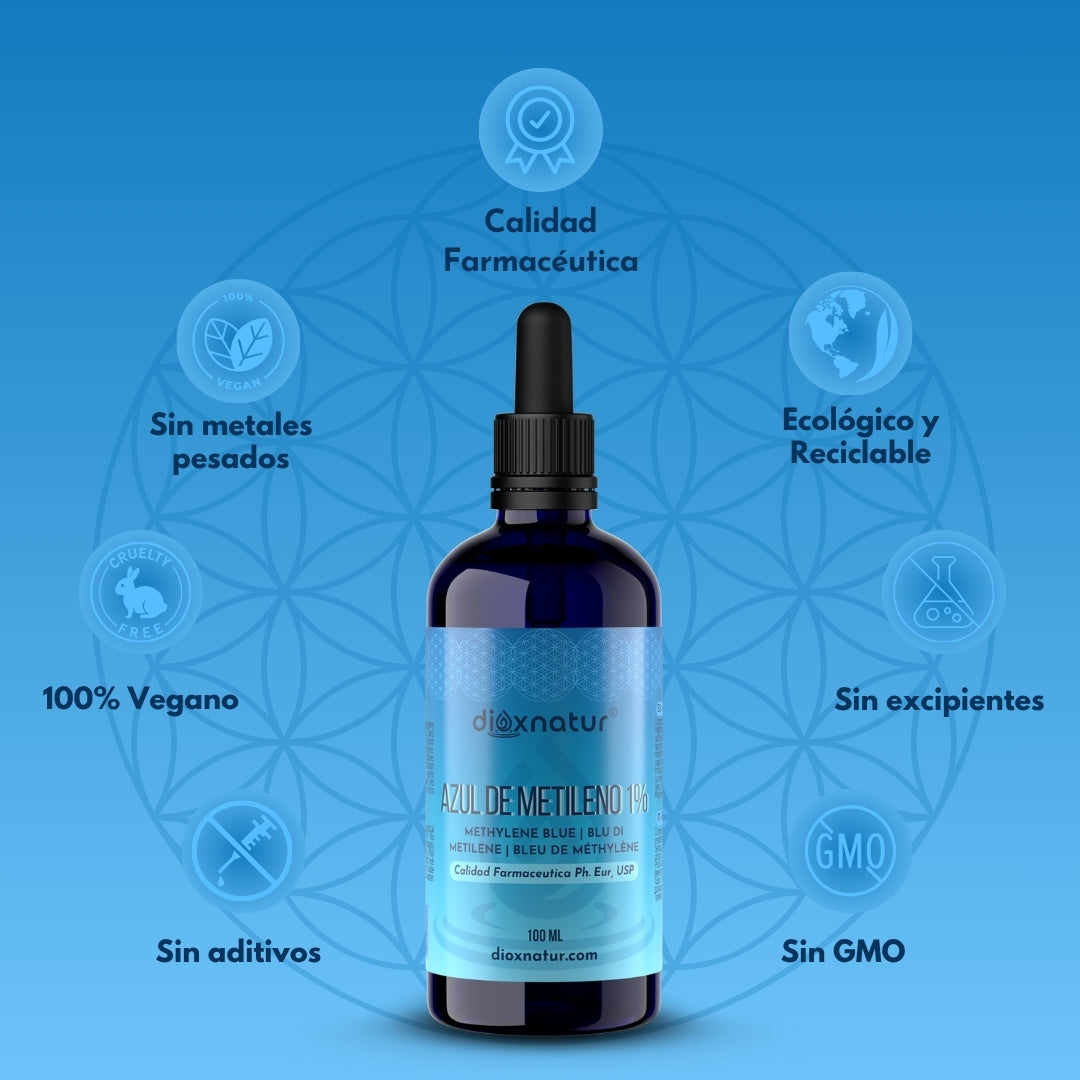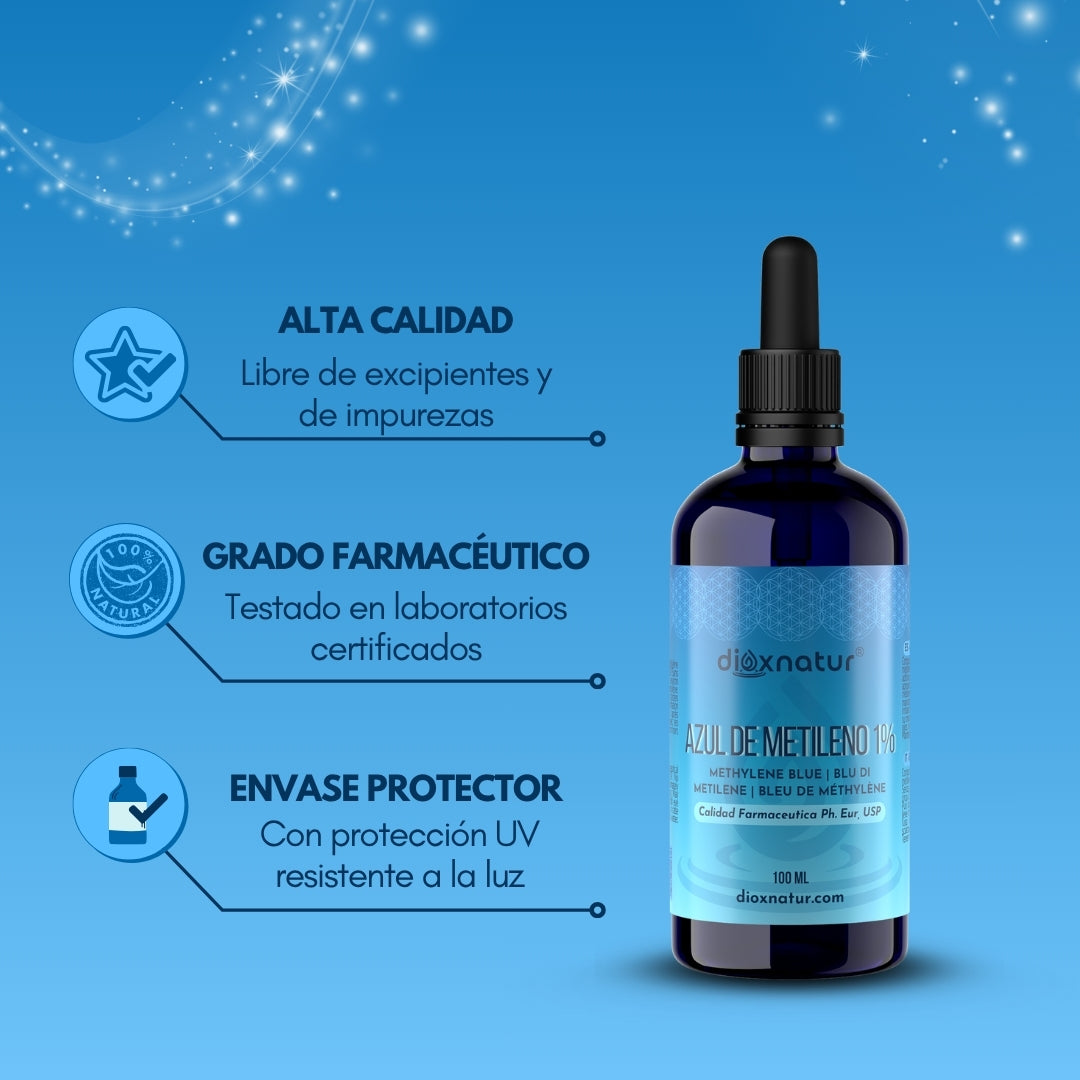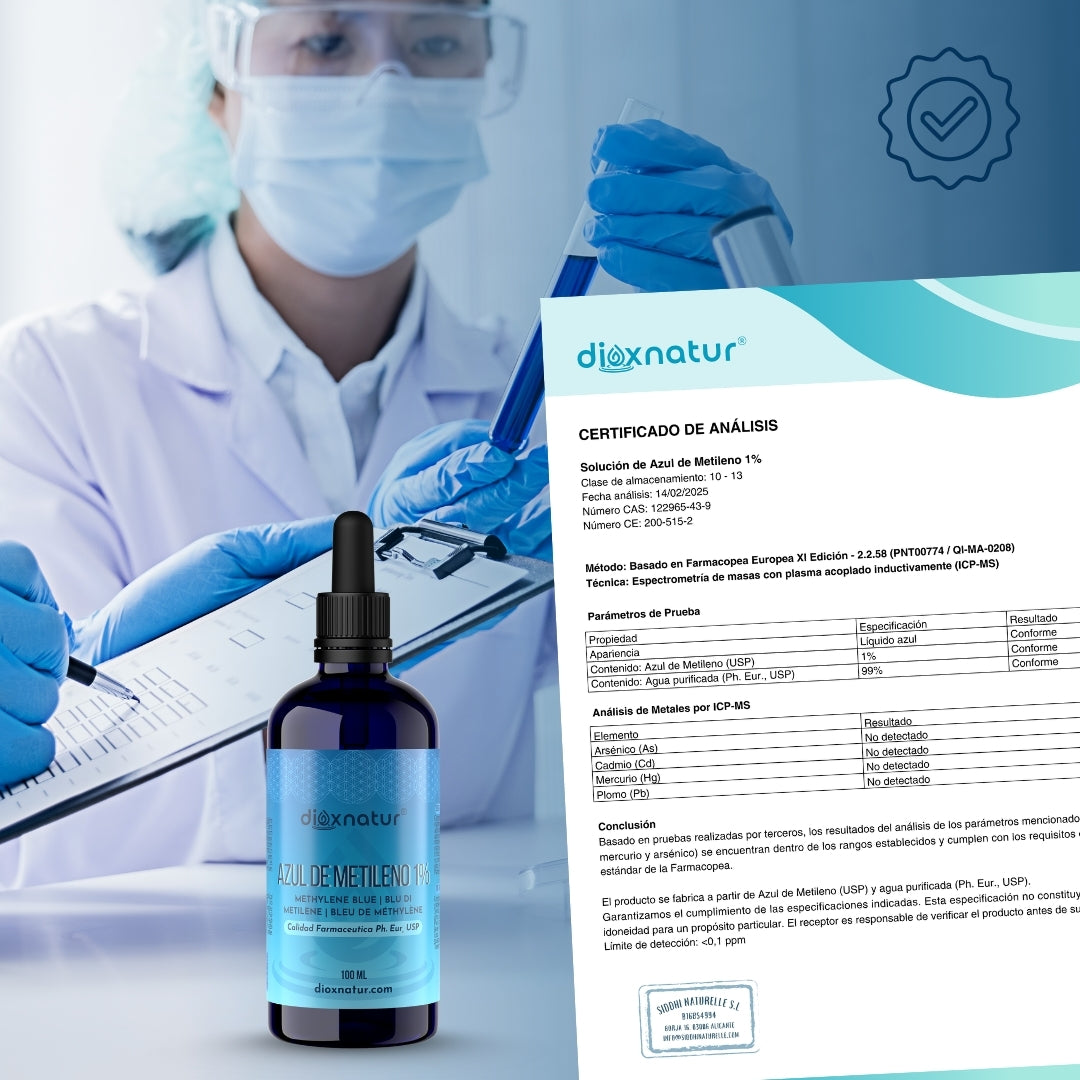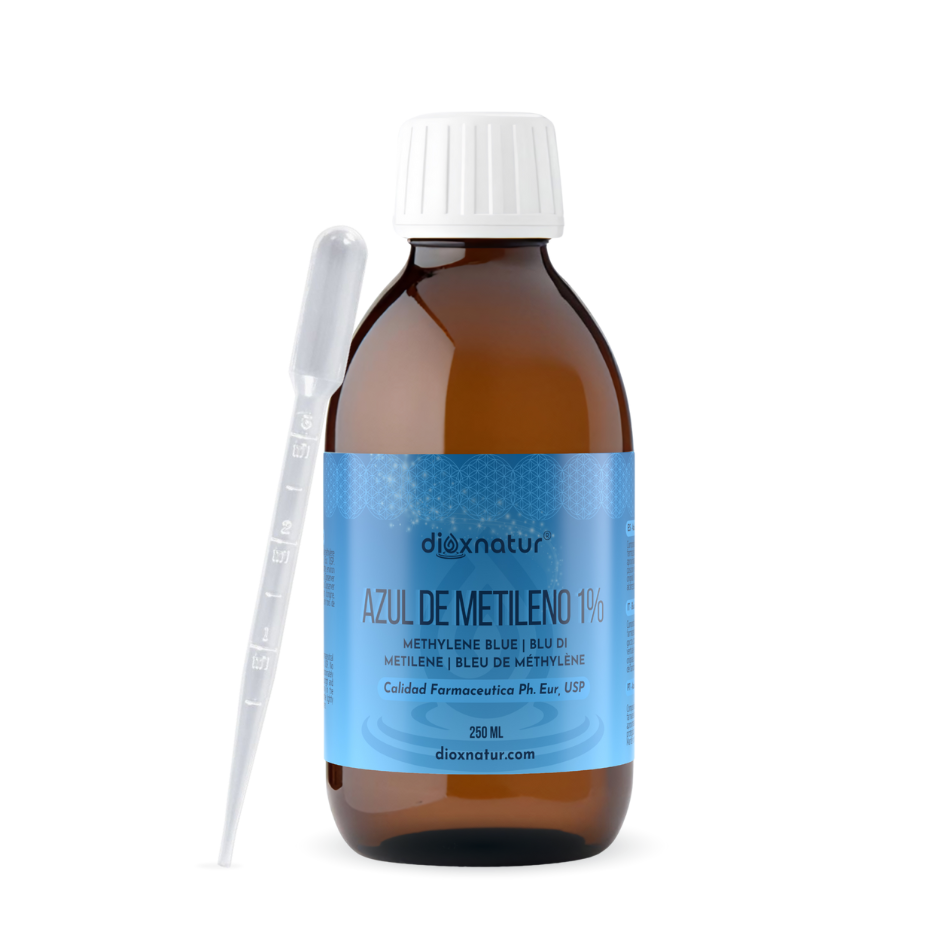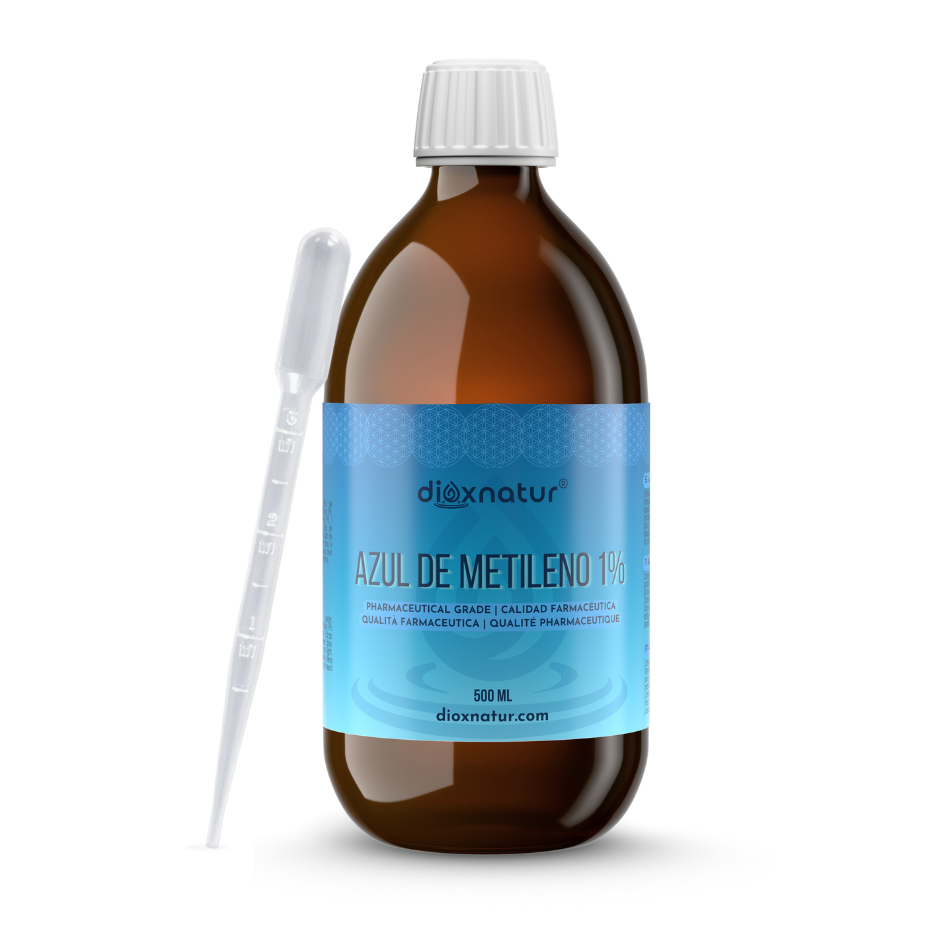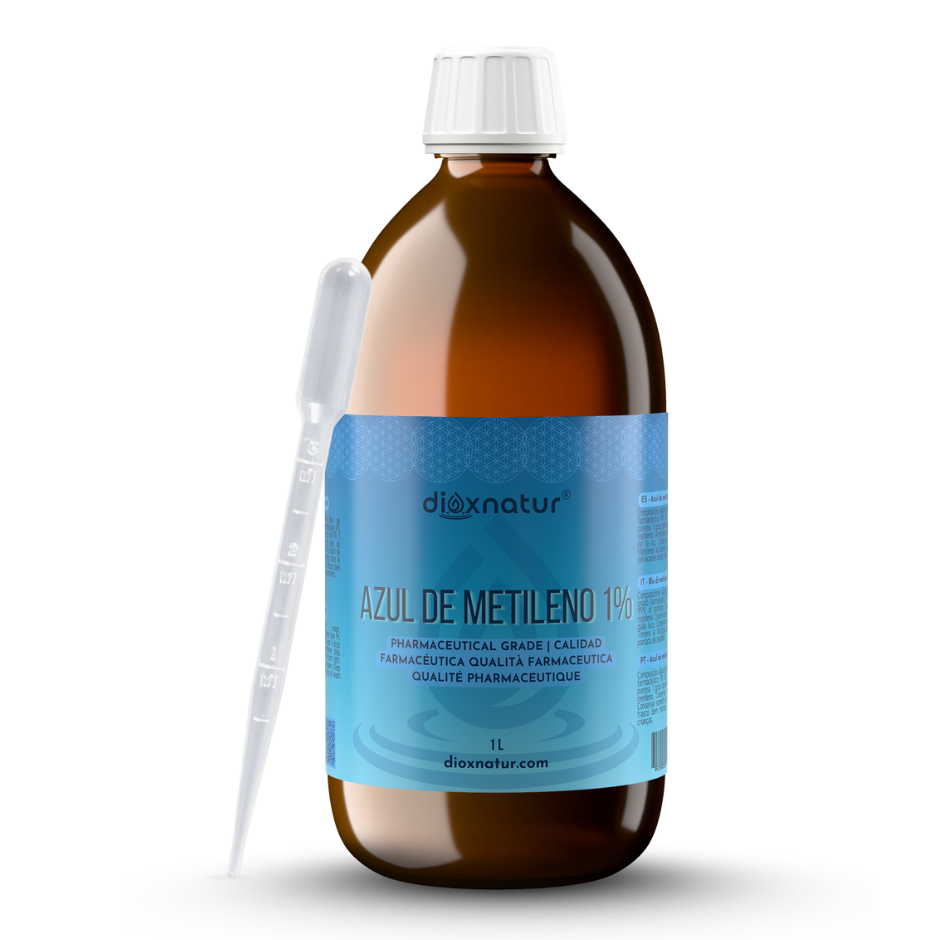Methylene Blue as a Dye
Methylene blue is a cationic dye. , which means it has a positive charge. This allows it to bind to parts of cells that are negatively charged, such as the nucleus, DNA and RNA. Thanks to this property, it is used in many scientific fields, including microbiology and cell biology, to identify microorganisms and to study cell structure in plants and animals.
When methylene blue is applied to a sample of cells, it can help determine their viability. If the cell is alive, its enzymes can break down the dye and render it colorless. However, if the cell is dead, the methylene blue will remain visible, making it easier to identify.
What dyes methylene blue?
Methylene blue is widely used in biology, chemistry, medicine and microbiology to stain specific parts of cells and tissues. Its main applications include:
- Identification of dead and living cells : Allows you to clearly see cellular structures in plant, animal and bacterial samples.
- Microscopy : It stains the nucleus of animal cells, making it easier to observe them under a microscope.
- Histology and hematology : Used to study tissues and blood samples.
- Gram stain : Helps distinguish between gram-positive and gram-negative bacteria.
This dye works particularly well on negatively charged structures such as DNA and RNA, making it useful for molecular studies. Additionally, it can be combined with other dyes, such as eosin Y (red dye), to enhance contrast in certain samples.
Uses of Methylene Blue as a Dye
1. Determine Cellular Damage
When methylene blue is added to a cell sample:
- If the cell is alive , enzymes present in its cytoplasm break down the dye, rendering it colorless.
- If the cell is dead , there are no active enzymes to remove the color, so the cell remains stained blue.
This method is used in laboratories to assess cellular health in biological and medical studies.
2. Identification of Microorganisms
Methylene blue is widely used in microbiology to stain bacteria and other microorganisms , since many bacteria are nearly invisible without staining. A biologist can apply a few drops of methylene blue to a sample to:
- Visualize bacterial shapes and structures .
- Distinguish between different types of bacteria , as in Gram staining.
3. Identification of Nucleic Acids
Methylene blue binds strongly to nucleic acids (DNA and RNA) . Thanks to this property, it is used for:
- Visualize DNA and RNA in molecular studies.
- Techniques such as gel electrophoresis , where the dye helps to identify DNA sequences without the need to use more toxic chemicals, such as ethidium bromide.
4. Identification of RNA sequences
Due to its affinity for nucleic acids, methylene blue is used in advanced techniques that allow the identification of RNA sequences in genetic studies.
5. Counting Viable Cells in Yeast Samples
In the study of yeast, methylene blue is used to differentiate living cells from dead cells :
- Dead cells turn blue because they cannot break down the dye.
- Living cells do not retain the dye and remain colorless.
6. Diagnosis of Bacterial, Viral and Fungal Diseases
Methylene blue is used in medicine to help diagnose infections caused by bacteria, viruses, and fungi. In the Löffler staining technique , for example, the dye highlights the presence of microorganisms in clinical samples.
In addition, methylene blue is used in:
- Surgical marking and medical diagnosis .
- Kidney function tests .
- Nerve staining in surgical procedures.
7. Applications in Chemistry
This dye is also used as a redox indicator , meaning that it changes color depending on the chemical environment it is in. For example:
- In contact with oxidizing substances, it remains blue.
- In the presence of reducing substances , it becomes colorless.
This property makes it useful in chemical analysis and volumetric titrations .
8. Use in Cancer Studies
In medical research, methylene blue is used to stain certain tumors in the head, neck, and mouth during surgery, helping doctors accurately identify the affected areas.
Methylene Blue Staining Procedure
Methylene blue is used in Gram staining , a key technique in microbiology for classifying bacteria.
Steps of the Gram Staining Process
- Application of methylene blue on the sample on a slide.
- Fixation of the dye with iodine, forming a complex that adheres better to bacteria.
-
Bleaching with ethanol or acetone.
- Gram-positive bacteria : They retain methylene blue and appear blue-violet.
- Gram-negative bacteria : They lose their dye and become colorless.
- Counterstain with fuchsin or safranin, which stains Gram-negative bacteria red or pink for better differentiation.
This process is essential in microbiology to identify different types of bacteria and guide the treatment of infectious diseases.
How to Remove Methylene Blue Stains
Methylene blue can easily stain clothing and skin. Here are some solutions:
1. In Clothes
- Apply strong detergent to the stain.
- Leave it on for a few minutes and rub with a brush.
- Wash with hot water and repeat if necessary.
2. On the Skin
- Wash with soap and warm water immediately.
- If the stain persists, use isopropyl or ethyl alcohol .
Frequently Asked Questions (FAQ)
Why is methylene blue important in microbiology?
Because it allows microorganisms to be stained, facilitating their identification under the microscope.
How do you distinguish between living and dead cells?
Living cells break down the dye and do not retain it, while dead cells remain stained blue.
Why does methylene blue stain the nucleus of cells?
Because it binds to nucleic acids, which have a negative charge.
Can methylene blue be used to dye clothes?
Yes, but it can be difficult to remove, leaving permanent stains.
What is the difference between methylene blue and ethidium bromide?
Methylene blue is safer and less toxic for visualizing DNA in laboratories.
Conclusion
Methylene blue is an essential dye in biology, microbiology, and chemistry. Its ability to stain cells and tissues makes it a useful tool for research and medicine. By following proper procedures, accurate results can be obtained in cellular and bacterial studies.



